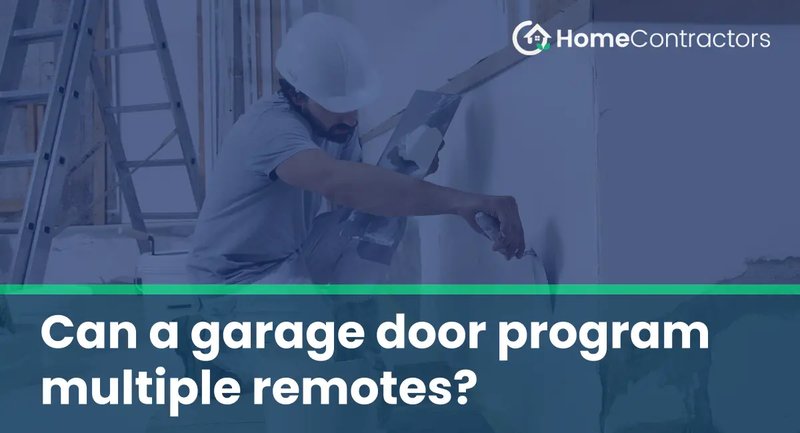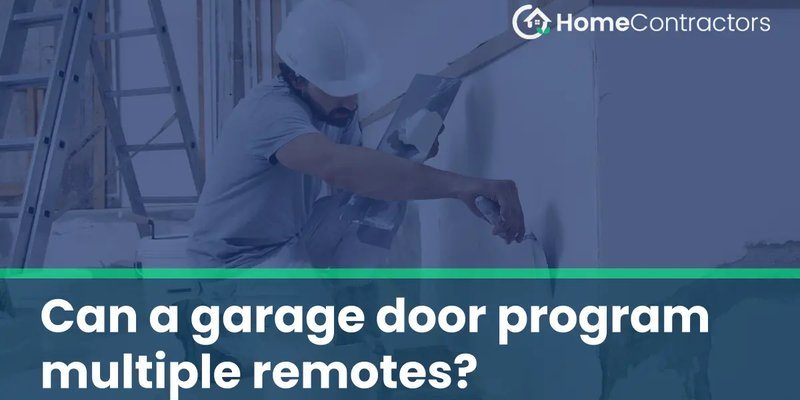
Honestly, figuring out how these remotes work can get confusing fast. The tech isn’t rocket science, but there are enough options and codes to make you second-guess yourself. Let me explain how Linear remotes are built and whether you can pair, sync, or reset them to manage more than one garage door—all without breaking a sweat.
How Linear Garage Remotes Communicate With Doors
So, what’s actually happening when you press that button? Think of your **Linear garage remote** as a walkie-talkie. When you hit the button, it sends a unique wireless code to your garage door opener. If your opener recognizes the code, it triggers the door to move. Pretty simple, right? But there’s a twist: not all remotes speak the same “language” or use the same codes.
Most modern Linear remotes use **rolling code technology**. That means the code changes every time you press the button, making it tough for sneaky types to snatch the code and break in. Earlier models used fixed codes, which, to be honest, are a bit less secure. The rolling code system is important when you’re thinking about pairing one remote with multiple doors, since each door opener listens for its own unique code.
Here’s the thing: most of the time, each Linear remote button can be synced to a separate door opener. So, if your remote has two or three buttons, chances are, you can control two or three doors—one per button. That’s the basic principle, but as you’ll see, it’s not always plug-and-play.
Which Linear Remotes Can Control Multiple Garage Doors?
You might be wondering, “Can any Linear remote work with multiple doors?” Honestly, it depends on the model. Some Linear remotes look almost identical but have totally different internals. The key thing to look for is how many buttons the remote has. More buttons usually means more doors you can control.
- Single-button remotes: These can only control one door at a time. Simple math. If you have two doors, you’ll need two remotes or look for a multi-button model.
- Multi-button remotes (like the Linear MCT-3): These allow you to pair each button with a different opener. If you’ve got three doors, you’re in luck! Just pair each button separately.
- Universal remotes: Some third-party remotes claim to work with “any brand” and multiple doors. In practice, results vary. Always check compatibility with your opener and follow the pairing instructions.
Let’s use a mini-story here: Imagine Lisa, who has a Linear three-button remote and two garage doors. She pairs the first button to the main door and the second button to her workshop’s garage door. Each button now acts like its own remote, even though it’s the same device. That’s the beauty of a well-designed remote.
Step-by-Step: How to Pair a Linear Remote With Multiple Doors
If you’re feeling nervous about accidentally messing up your garage door opener, don’t worry—pairing isn’t as scary as it sounds. Here’s a slow, step-by-step guide for most Linear remotes:
- Check the battery: Low battery can mess up the sync process, so swap in a fresh one if needed. It’s amazing how many issues just a weak battery can cause.
- Locate the “learn” button on your garage door opener units: This button is usually on the motor housing, sometimes behind a light cover. It’s often labeled “LEARN” or just a mystery little button.
- Press “learn” on the first opener: Hold it until the indicator light blinks (usually a few seconds).
- Pick a button on your Linear remote: Hold the button you want to use until the opener’s light flashes again. That’s your handshake.
- Repeat for other doors: Move to the next opener, press its “learn” button, then hold the next button on your remote. Voilà, second door ready.
Pro tip: Don’t try pairing all doors at once. Go one at a time—opener, remote button—so they don’t get “confused.” If your remote isn’t responding after pairing, try a code reset and start over.
Troubleshooting Common Problems With Linear Remotes and Multiple Doors
Pairing doesn’t always go smoothly. Sometimes, the remote refuses to sync with one of the doors, or maybe you find an old remote won’t work after setting up a new one. It’s enough to drive you up the wall. Let’s break down some common headaches and fixes.
- Remote won’t pair with second door: Double-check you’re pressing the right button. If you used the same button for both, you’ll overwrite the first door’s code.
- Battery problems: It sounds silly, but a bad battery will kill your range or make pairing impossible. Always start fresh if things act weird.
- Distance issues: The remote has a limit—usually around 100 feet line of sight. Thick walls, metal siding, or even a parked car can mess with the signal.
- Sync confusion: Sometimes, garage openers can get “confused” if you try to pair too quickly. Waiting a minute between each door helps.
If you ever feel stuck, a “reset” (see the opener’s manual) will wipe out all codes—just remember, you’ll need to re-pair every remote for every door after!
If your Linear remote is older or a different model, check the manual for specific pairing steps. Some remotes need a sync code entered with tiny dip switches, while others do everything wirelessly. It pays to read the fine print.
How Do Linear Remotes Compare to Universal Remotes for Multiple Doors?
Let’s talk about alternatives for a second. Universal remotes can sound tempting—they claim to work with anything, and some do let you program multiple doors. But here’s the catch: not all universals play nicely with Linear openers. Some require extra steps, or they just don’t sync reliably, especially if you’re using rolling codes.
Linear brand remotes are designed specifically for Linear openers, so they usually pair up easily and work as expected. Universal remotes might need you to enter a special code or even perform a complicated sync sequence. If you’re not a big fan of troubleshooting, it’s safer to stick with the brand’s own remotes.
I once tried a universal remote for a friend’s house, trying to pair it with both a Linear and a Genie opener. The Genie synced in seconds; the Linear took three tries and only worked when I stood on a chair. Sometimes, “universal” is just another word for “fussy.”
When You Might Need More Than One Linear Remote
Here’s something folks rarely talk about: even with a multi-button remote, sometimes you’ll want to keep more than one Linear remote around. Maybe you have kids, partners, or houseguests who all need separate access. Or, you just want a backup in your other car. Multi-door control is convenient, but you don’t want to be left out in the rain if you misplace your main remote.
It’s also handy if you have a mix of older and newer openers. Not all models are cross-compatible, especially if you have both rolling and fixed code units. In that case, you might need a separate remote for each type, or at least a universal remote that supports both.
If you’re considering adding remotes, check your opener’s manual to see how many different codes it can “remember.” Some budget models only allow a few remotes before you have to wipe and start over.
Security, Codes, and Resetting: What Every Owner Should Know
Pairing multiple doors is awesome, but don’t forget about security. Modern Linear remotes use rolling codes to keep your home safe. Every time you press a button, the code changes, making it nearly impossible for anyone to copy your signal.
But if you ever lose a remote—or feel like your system’s gotten too cluttered—a full reset is your best friend. Most Linear openers have a “reset” or “erase all codes” function. Just hold the learn button down for about six seconds until the indicator light blinks, and the opener forgets all remotes. Then, re-pair the ones you want and leave off the lost ones.
Think of it like changing the locks on your house after losing a key. A quick reset gives peace of mind, especially if you hand out remotes to family, cleaners, or dog walkers.
Signs It’s Time to Replace or Upgrade Your Linear Remote
No remote lasts forever. If you notice the range shrinking, buttons not responding, or your remote needing frequent resets, it might be time for a new one. Sometimes, it’s just an old battery. But if a fresh battery doesn’t fix things, the internal electronics could be wearing out.
Also, technology keeps moving. Older Linear remotes may not work with newer openers, or lack rolling code security. Upgrading to a current model can mean better security and easier pairing.
One trick: if you’re replacing a remote, write down which button controls which door. It’ll save you a ton of headache during setup—trust me, it’s way too easy to forget.
Final Thoughts: Making Your Garage Doors Work Smarter, Not Harder
Juggling multiple garage doors doesn’t need to be a circus act. Most **Linear garage remotes** with two or more buttons can be paired to different doors, letting you skip the pocket clutter and simplify daily routines. It’s a little bit of upfront setup, sure, but once you get the hang of pairing, syncing, and resetting, it’s pretty smooth sailing.
Keep an eye on battery life, follow the pairing steps slowly, and don’t be afraid to reset if you ever get mixed up. Whether you stick to Linear’s own remotes or try a universal one, the goal’s the same: smart, secure, and simple access every time you come home.
And really, isn’t that what we’re all looking for?
